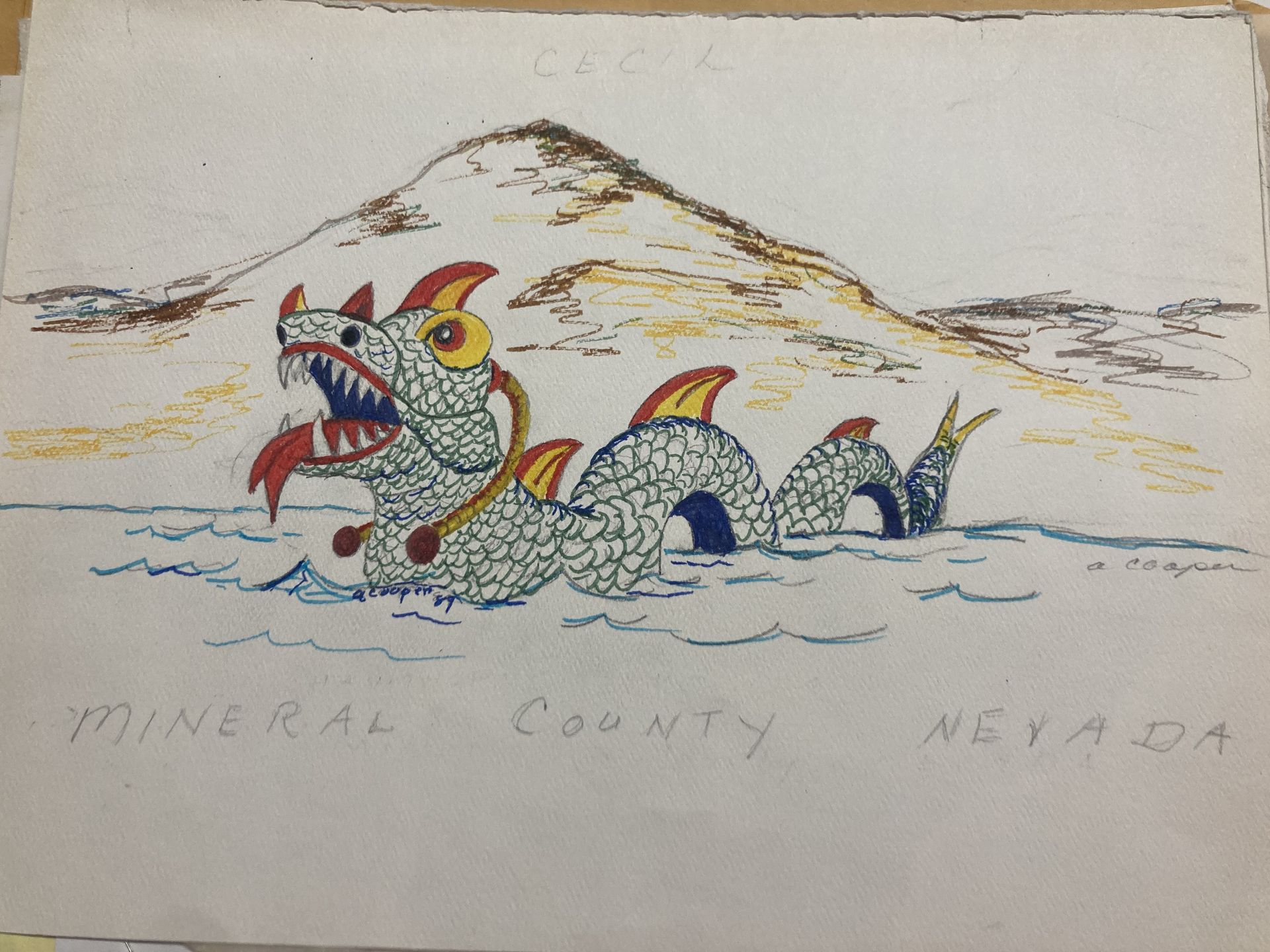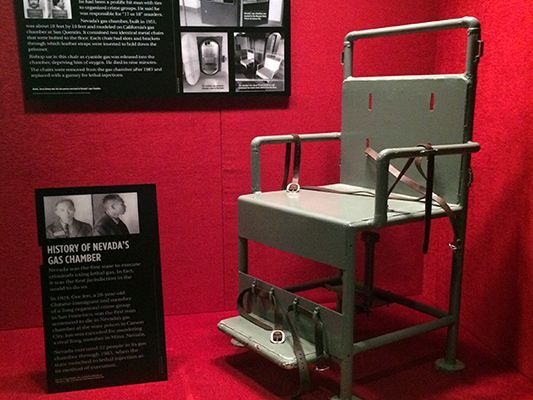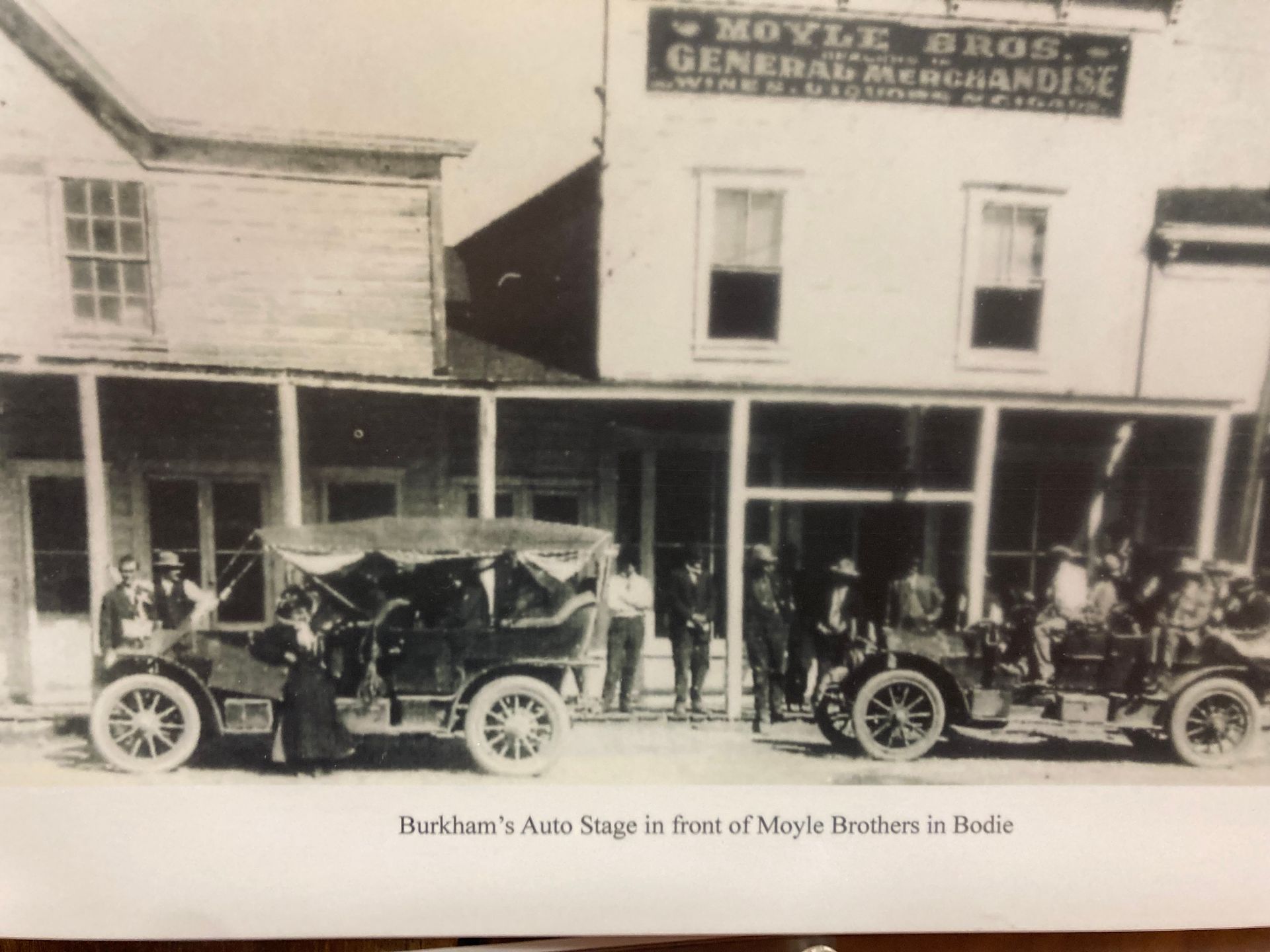
Cecil the Sea Serpent
The Walker Lake Sea Serpent is an old Native American Legend handed down for generations before the arrival of white men. The story goes, someone walked up on the beach near the west side of Walker Lake and saw a large monster laying on the bank and he shot arrows into the animal but was not easy to kill. He claimed he wounded it and later to find that there were bones on the beach which he believed to be the monster. At another time some white men claimed to see the monster too and that they shot at it and it was at least 56 feet long. But no one seem to actually have the skeleton. Apparently, they left it there. The white men said it was too large and smelled bad. Maybe it was an unnamed species of reptile. In 1883 the Walker Lake Bulletin Newspaper printed an article August 1st of 1883 about people camping at the lake and waking up to two sea monsters fighting. Everyone described it differently. There was a university professor from Standford University named David Star Jordan thought that it could be an Ichthyosaur and wanted to capture it and study it and send it the Smithsonian. Many people believed that there was something in that lake. The Native Americans would not actually go out in boats or in the water because of it. In 1915 there was a disturbance in the water which sent waves crashing everywhere, many people believed it was the serpent, others said it was an earthquake. There was a hermit at the lake asked the county commissioners how much they would pay for the head of the reptile. When the highway was being built in the 1920’s there were many sightings from people passing by. It was thought that the serpent had a cave under the cliffs and he was mostly in that area. It was said by many people at one time there was an underground spring in the area of the cliffs and a body that disappeared in Walker Lake turned up in Pyramid Lake. There has been many sightings of it over the years but none in recent years. Many stories have been told over the years. The owner of the Capital Saloon, Charlie Kimball claimed to have to bones of the Sea Monster on display above his bar. At that time the sea serpent was also called Sara by the white people.
The Walker Lake Sea Serpent was originally called Tawaga named from the Native Americans. In 1949 there was a cartoon created called Beany and Cecil. The cartoon looked a lot like how Cecil the float looks today. The Serpent was nicknamed Cecil and it stuck. Today he is referred to as Cecil the Sea Serpent.
In 1964, to celebrate Nevada’s 100th birthday Cecil was constructed at the Hawthorne Ammunition Depot and floated on Walker Lake as part of the Armed Force Day Celebration. The Walker River Native American Tribe danced in full regalia and the serpent sailed around to a point at the lake with smoke coming out of his nostrils and throat with lights and fireworks in the background. Originally, it was supposed to be a one-time deal, but everyone protested and insisted that we do it again. In 1966 he went on the lake again, he caught on fire from a near fireworks display. And it was then decided that he should not be on the lake again and wheels were put on him after that. He appears every year in the local Armed Forces Day Parade as a float and he has appeared at other Nevada celebrations in parades as well. In 1990 Cecil was renovated which included redesigning of the trailers, restoring the mechanical devices that produce smoke from his nostrils and was repainted and was given a general facelift.
Although, there has not been any recent sightings, today he is still very much a part of our culture here in Hawthorne Nevada. He recently has been moved to a storage facility at the airport to help preserve him. And currently, some of the Mineral County Museum’s Collections of Cecil is at the Nevada Museum of Art as part of the Deep Time Sea Dragons of Nevada Display.
Resources:
The book Walker River Paiutes- Tribal History
Harold Fullers Stories from Goldfield Radio
The Times newspaper November 1978 three-part article from Denaya Pucket
Files at the Mineral County Museum
Mineral County High School


